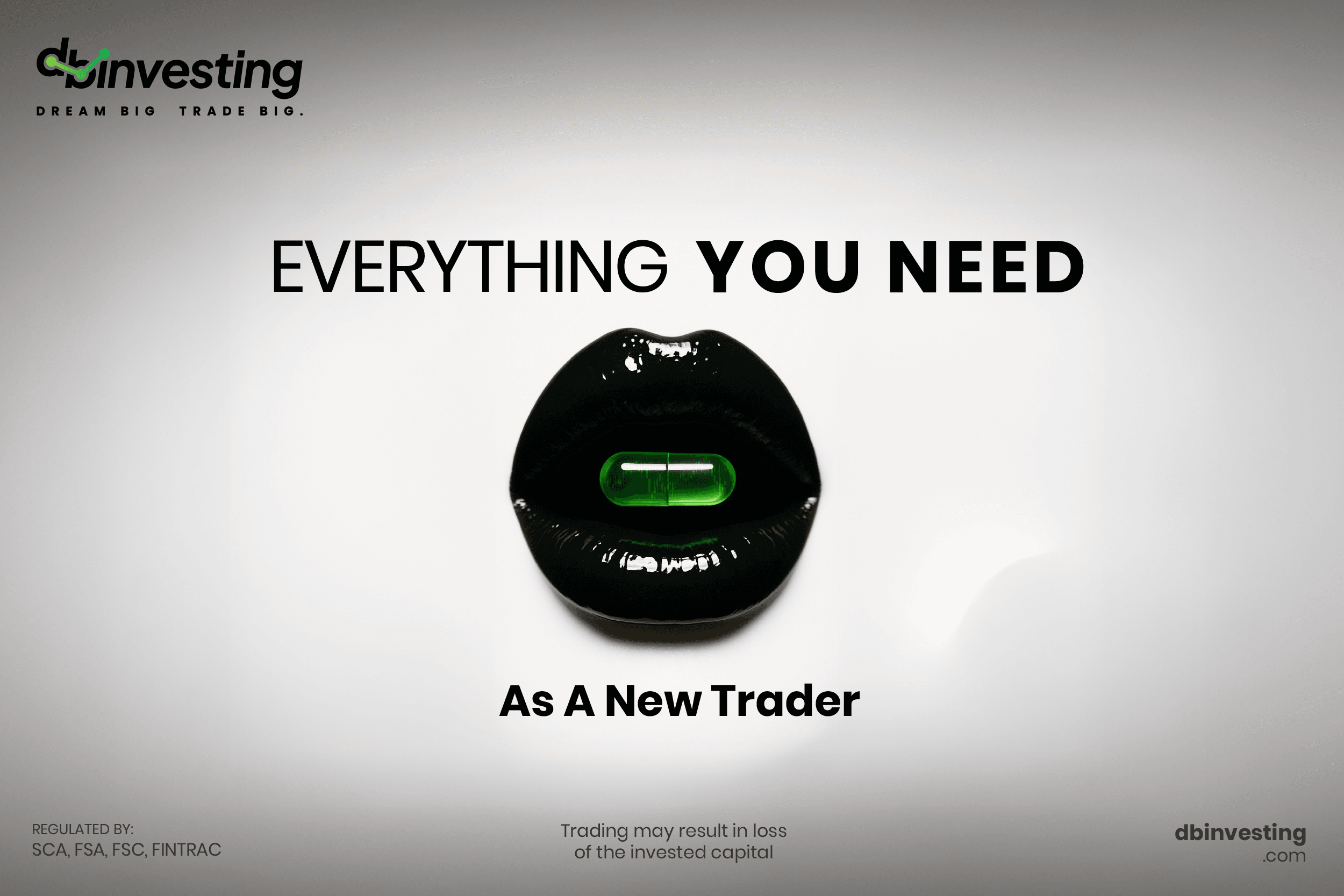Everything You Need to Know as a New Trader
Start Your Trading Journey with Confidence
Trading can feel intimidating at first, charts, indicators, brokers, market news… it’s a lot to take in. But at its core, trading is about making informed decisions, managing risk, and staying consistent.
At DB Investing, we help new traders navigate this landscape with the right tools, guidance, and mindset. Here’s everything you need to start strong.
Step 1: Understand the Basics
Before you place your first trade, grasp the fundamentals:
Markets: Stocks, forex, commodities, and crypto. Know the differences.
Trading vs. Investing: Trading is short-term and tactical; investing is long-term.
Order Types: Market, limit, stop-loss — understand how each works.
Leverage & Margin: Powerful tools but risky. Start small and always manage exposure.
Trading Tip: Start with a demo account to experiment without real risk. Confidence comes from practice.
Demo Account - DB Investing - Award Winner Broker, FSA and SCA regulated
Step 2: Risk Management: Protect Your Capital First
Trading is exciting, but losses are inevitable. The key to long-term success isn’t avoiding losses, it’s controlling them. Risk management gives you a safety net, so you can trade confidently without jeopardizing your financial future.
1. Set a Maximum Risk Per Trade
- Never risk more than 1–2% of your total trading capital on a single trade.
Example: With $1,000 in your account, limit risk to $10–$20 per trade.
This keeps one mistake from wiping out your account.
2. Use Stop-Loss and Take-Profit Orders
- Stop-Loss: Automatically closes your trade if the price moves against you beyond your set limit.
- Take-Profit: Locks in gains when a trade reaches your target.
Always define these before entering a trade, not after you’re emotionally invested.
3. Diversify Your Trades
- Don’t put all your funds into a single asset. Spread your trades across different instruments (stocks, forex, commodities).
- Diversification reduces the impact of one bad trade on your overall portfolio.
4. Keep Leverage in Check
- Leverage can amplify gains, but also losses.
- Start with low leverage until you fully understand how it affects your trades.
5. Explore Your Risk Appetite
Everyone has a different comfort level with risk. Test different strategies in a demo account to see how much you can handle emotionally and financially.
Understanding your risk appetite helps you avoid panic trades, overexposure, and burnout.
6. Track and Review Your Performance
- Maintain a trading journal: record entry/exit points, strategy, and results.
- Reviewing past trades teaches you what works and what doesn’t, improving your decision-making.
Trading Tip: Think of risk management as your compass; it keeps you on course even when markets get volatile. No strategy is worth risking your entire account. Knowing your risk appetite is just as important as knowing your strategy.
Step 3: Choose the Right Tools
A trader is only as good as their tools. Essentials include:
- Trading Platform: Easy navigation, real-time data, robust charting. DB Investing offers platforms tailored for beginners and pros alike.
- Charts & Indicators: Learn simple indicators first — moving averages, RSI, support/resistance. Complexity comes later.
- News & Analysis: Reliable market insights help you make informed decisions. Avoid hype-driven sources.
- Risk Management Tools: Stop-loss, take-profit, and portfolio tracking. Protect your capital before chasing gains.
Trading Tip: Use the platform’s educational resources and analytics dashboards to learn as you trade.
Step 4: Develop a Trading Plan
Random trades are risky. Your plan should include:
- Objectives: Are you aiming for short-term gains, income generation, or learning?
- Capital Allocation: Only trade what you can afford to lose. Diversify your positions.
- Entry & Exit Rules: Set clear criteria for entering and exiting trades.
- Risk Management: Never risk more than a small percentage of your account on one trade.
Explorer Tip: Think of a trading plan like a map, it keeps you on course even when markets get volatile.
Step 5: Mindset Matters
Trading isn’t just numbers; it’s psychology:
- Discipline: Stick to your plan, don’t chase losses.
- Patience: Not every day is a trading day. Wait for setups that meet your criteria.
- Learning from Mistakes: Every trade — profitable or not — is data for improvement.
- Confidence Over Emotion: Avoid impulsive trades driven by fear or greed.
Trading Tip: Treat losses as lessons. A seasoned trader sees every trade as feedback, not failure.
Step 6: Continuous Learning
Markets evolve constantly. Successful traders keep adapting:
- Webinars & Tutorials: Leverage educational content to stay ahead.
- Demo Trading: Test new strategies before risking real money.
- Networking & Communities: Discuss strategies and trends with other traders.
- Performance Review: Track your trades, analyze results, and refine strategies.
Trading Tip: The more you learn, the less you guess. Knowledge is your most reliable trading tool.
Step 7: Partner with a Trusted Platform
A strong trading partner makes the journey smoother:
- Transparent pricing and execution
- Beginner-friendly interface with advanced tools when you’re ready
- Dedicated support and guidance for new traders
- Educational resources to boost confidence and skill
DB Investing combines robust platforms, market insights, and a beginner-first approach, helping new traders move from uncertainty to informed action.
Final Thoughts
Trading doesn’t need to be complicated. Start simple:
- Learn the basics
- Use the right tools (explore more here DB Investing - Award Winner Broker, FSA and SCA regulated )
- Make a clear plan
- Master your mindset
- Keep learning
- Partner with a trusted platform
With discipline, patience, and the right support, trading becomes less about luck and more about smart decisions.
Trading Takeaway: Every expert trader started exactly where you are today. The journey begins with curiosity, preparation, and consistent action.

 Institutional Site
Institutional Site 